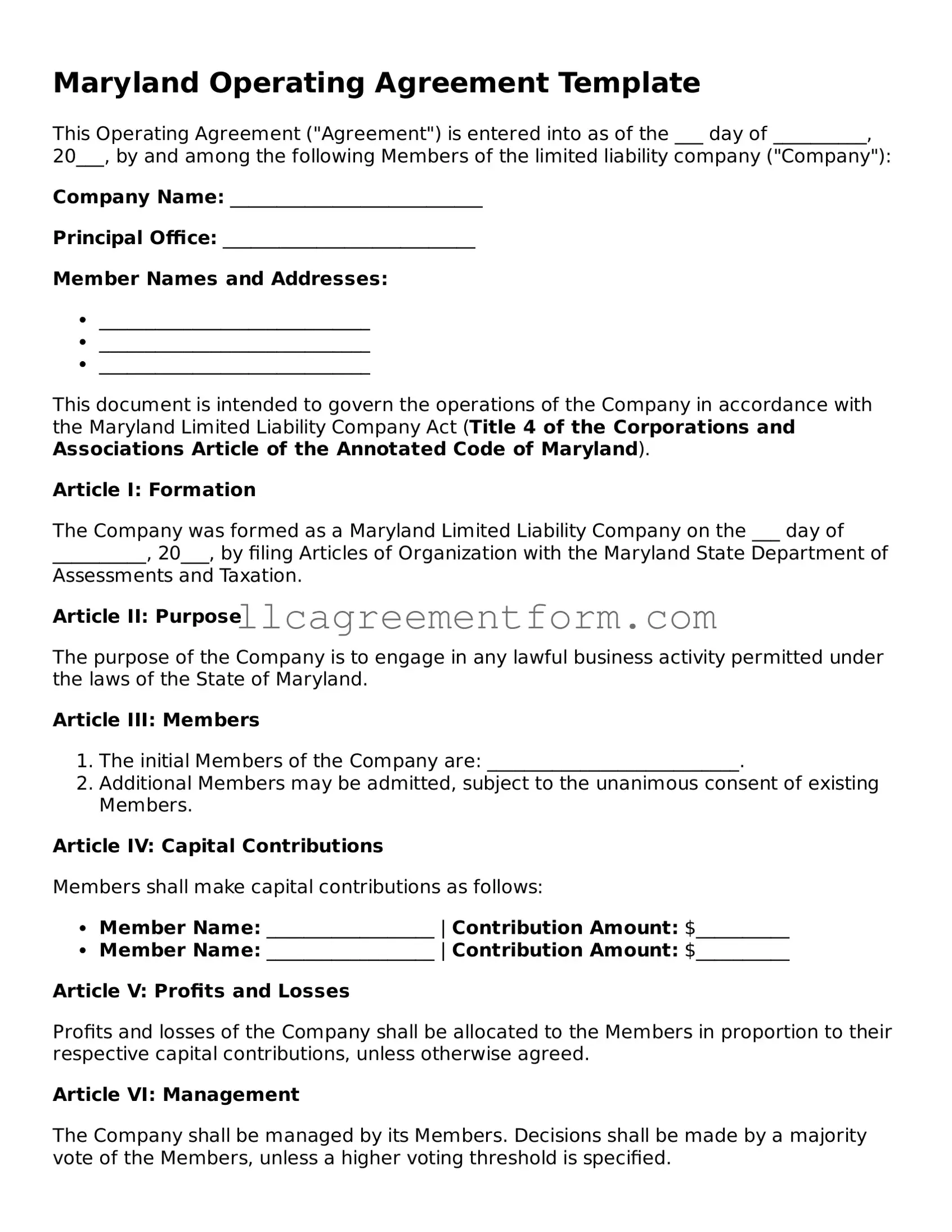When starting a business in Maryland, one of the key documents to consider is the Operating Agreement form, which serves as a foundational blueprint for how your business will operate. This document is particularly important for Limited Liability Companies (LLCs), as it outlines the management structure, defines the roles and responsibilities of members, and sets forth the rules governing the company’s operations. By detailing aspects such as profit distribution, decision-making processes, and procedures for adding or removing members, the Operating Agreement helps prevent misunderstandings and disputes among owners. Additionally, while Maryland law does not require an Operating Agreement for LLCs, having one in place can provide crucial legal protections and enhance credibility with banks and investors. Understanding this form is essential for anyone looking to establish a successful business in Maryland, ensuring that all members are on the same page from the very beginning.
